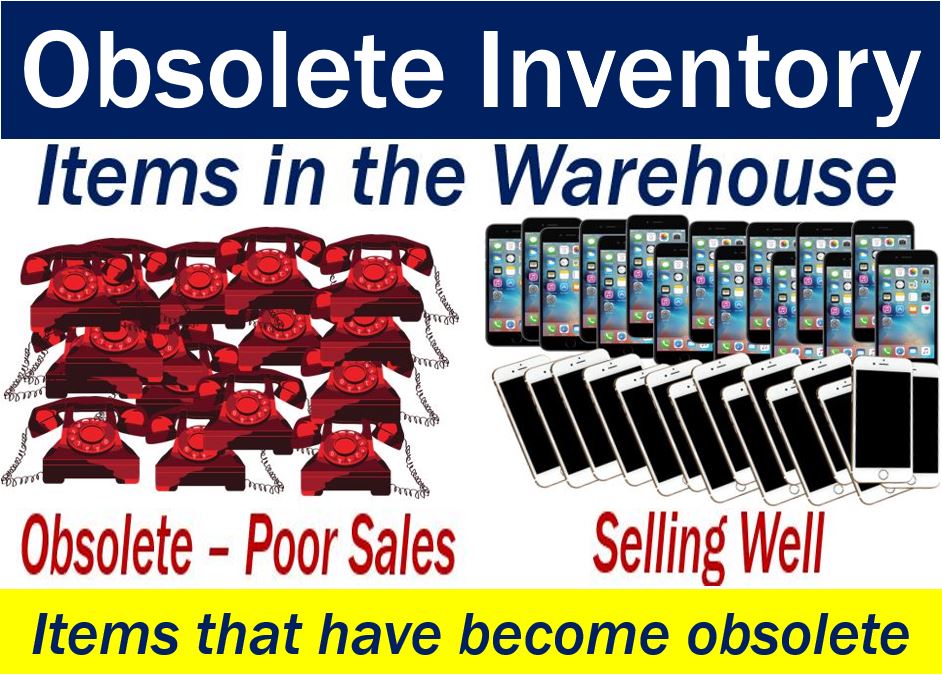Obsolete inventory – definition and example
Obsolete inventory is a company’s inventory that has reached the end of its product lifecycle. In other words, the inventory has no additional sales capability or usage. Often, this kind of inventory harms a business’ overall profitability and causes losses on its balance sheet.
Put simply; the term refers to items that are either impossible or very difficult to sell.
The terms ‘dead inventory‘ and ‘excess inventory‘ mean the same as obsolete inventory.
Excess inventory sits on a company’s balance sheet as working capital. We treat it as working capital that is tied up with virtually no promise of return on investment.
Dead inventory warns investors that the company may have poor inventory management, second-rate products, or inaccurate management forecasts of demand.
By examining a company’s level of obsolete inventory, we have an idea of how well its goods are selling. Additionally, it tells us how effective a firm’s inventory process is.

Obsolete inventory – example
For example, imagine John Doe Inc. is a cookie maker. John Doe makes a batch of 10,000 cookies that it cannot sell after November 30. It cannot sell them because they are no longer edible after that date. In other words, their sell-by date is November 30.
John Doe sells 7,500 cookies by November 30. This means that there are 2,500 cookies that it cannot sell. Those 2,500 cookies are ‘obsolete inventory.’
As soon as a company identifies dead inventory, it must write it off. This is a GAAP requirement. GAAP stands for Generally Accepted Accounting Principles.
Business can try to sell their obsolete products at a discount or donate them to charity. For John Doe, however, looking for a buyer for cookies after their sell-by-date, however, would probably be illegal.
GAAP rules require businesses to set up a reserve account for obsolete inventory on their balance sheets. They use up the reserve money as they dispose of their obsolete goods.
This can reduce profits considerably. In fact, obsolete inventory can be the cause of significant losses.
According to the blog eazystock:
“Obsolete Stock is a term that refers to inventory that has reached the end of its product lifecycle. In this stage of the product lifecycle, there is no market demand for the product.”
Video – Eliminate obsolete inventory
Dead inventory can use up valuable warehouse space. This Iconotech video looks at the cost savings if you switch from pre-printed case inventories to generic case inventories.

